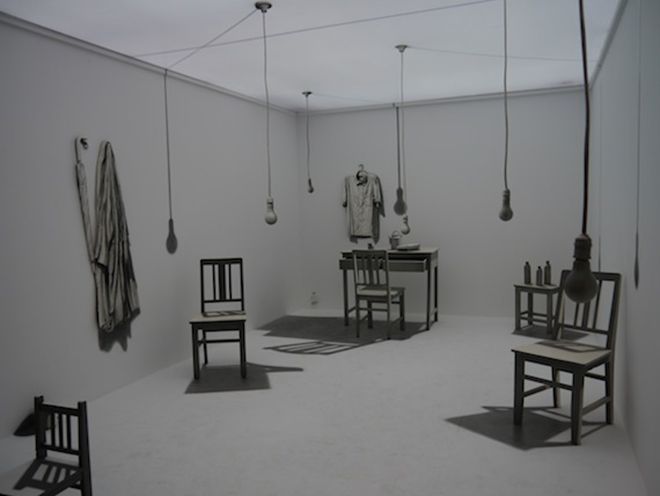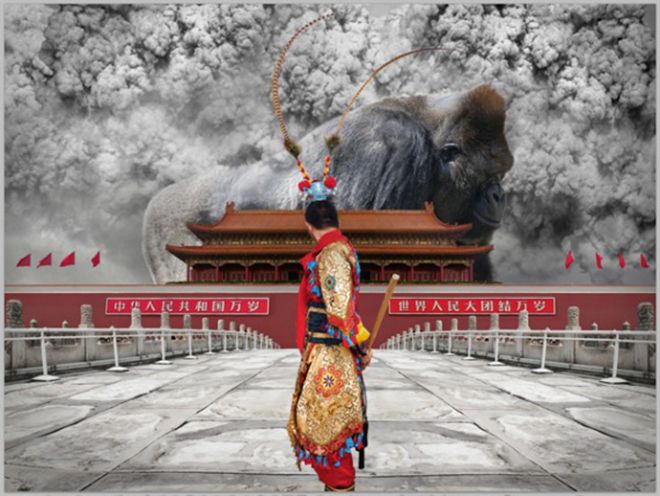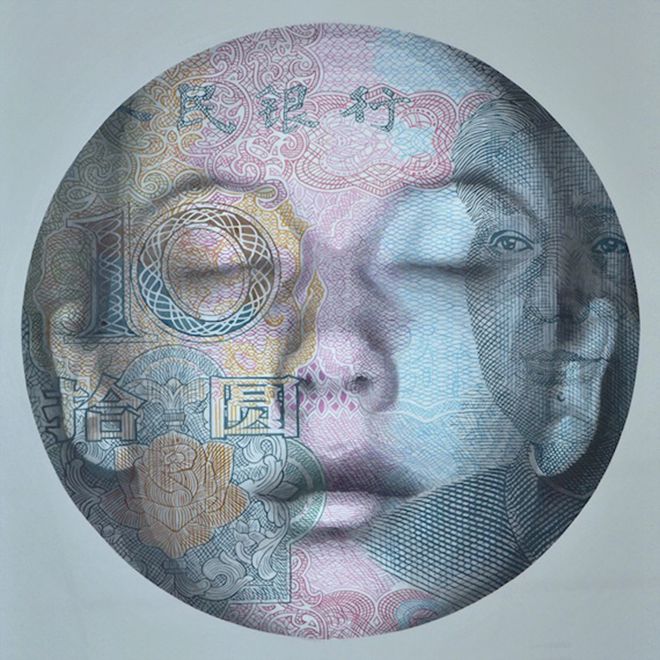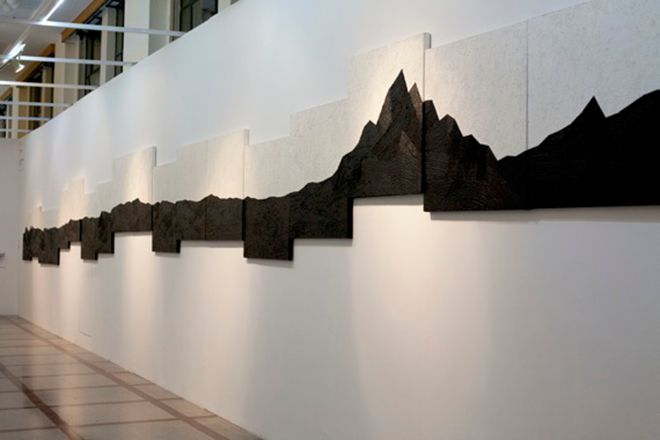The 6th Annual SH Contemporary was nervously watched by the local art community amid rumors that the fair’s contract with the local government was coming to an end. The event was marred by censorship of a number of non-political works, lackluster sales and average offerings in the booths.
The censors came too, requesting, for example, that Steven Harris, the director of the Shanghai gallery M97, remove “NOW_ing” (2011) by Chi Peng (pictured below). Perhaps an image of a Monkey storming the Forbidden City amid billowing smoke isn’t quite “this season” with the new leadership shuffle on the horizon. Another work, a painting by Ye Hongxing, which depicted an abstracted image of Chairman Mao at Art+Shanghai, was also censored, and because of these works the fair had to be tight-fisted with handing out copies of the catalog.
Still, special projects such as “Now Ink” brought some worthwhile works including Shen Fan’s impressive Shanghai Stock Exchange piece (“Landscape 9210,” 2012), an arresting work by Alexandre Joly (“Absolute Sine,” where sound waves hold ephemeral patterns on a basin of ink) and strangely for an “ink” project ceramic vessels by Moataz Nasr. “Hot Spots” this year included artists from India — as put by the fair director Massimo Torrigiani, “to show Asian collectors that they need to look in that direction.”

As per last year, the main exhibition hall was given over to booths rather than special projects, which were relegated to the more theatrical stairwell spots in the building’s wings. Gone for the 6th edition was the staging erected at the end of the hall, leaving a clean, focused collection of galleries. Several remarked on improved organization and standards compared with the 5th edition. Numbers, however, were barely up on 2011, with 90 galleries up from 87. Conspicuous by their absence were Beijing’s big players Pace and Long March Space, contributing to a sense that SHContemporary is an increasingly local fair, one plagued by a host of random galleries such as Purple Roof, Moproo Gallery and Suomei Art Gallery — which have very little presence in the city outside of their annual appearance at the Shanghai exhibition center. It is also one shadowed by local problems where the city government’s support for future editions is a recurrent uncertainty, and there are rumors that the balance may be in the red.

Amongst the few foreign attendees were Flagstaff Gallery (Auckland), Galerie Italienne (Paris) and Tasneem Gallery (Barcelona) — all new arrivals — and a few returnees such as Eigen+Art. One has come not to expect fireworks from the booths at SH Contemporary. This year decorative, wall-ready works seemed to proliferate, with fewer experimental pieces in evidence, though 18Gallery made a nice showing with the work of Jiang Ji’an, a small replica of a room painted all in white paint with the shadows from the furniture, lights, plates and clothing drawn on to the walls and ground in pencil. Surrounded by skull-like sculptures by various artists (MadeIn, Wang Xieda, Liu Chuyun, Liu Weijian, Lin Tianmiao, Qiu Zhijie, Yuan Yuan, Qiu Xiaofei) — by far one of the most striking presentations — Xing Zhao of James Cohan Shanghai remarked on the lack of variety amongst this year’s displays; “It’s all about Art HK these days,” he remarked, attributing a want of dynamism at SHContemporary to the migration of art-fair excitement southwards, an observation difficult to dispute. Still, prices were high and sales lackluster, although there were a number of gallerists who reported improved sales on last year. AIKE-Dellarco’s Robert Ceresia gained three to four new clients and remarked that Mainland Chinese were buying more. ShanghART, too, cited better sales and a smoother installation than in the past. Star Gallery sold both the Jin Nu sculptures it had brought from Beijing. On the middle ground, Steven Harris at M97 commented on SHContemporary as a “reliable” fair in practice, accurately reflecting the market with few surprises.

One might say there were few surprises at SHContemporary overall. Now is certainly a testing time for this Mainland fair, particularly in the face of Hong Kong’s rampant internationalism, which is proving a powerful, and perhaps underestimated distraction. Its future success will hinge, one suspects, on SHContemporary’s ability to use its “local” status to more directional and cohesive effect than was in any way evident at this, its sixth edition.
(Photo credit: Robert Casey Drake).











